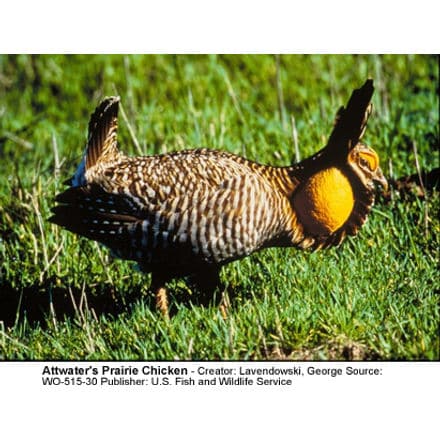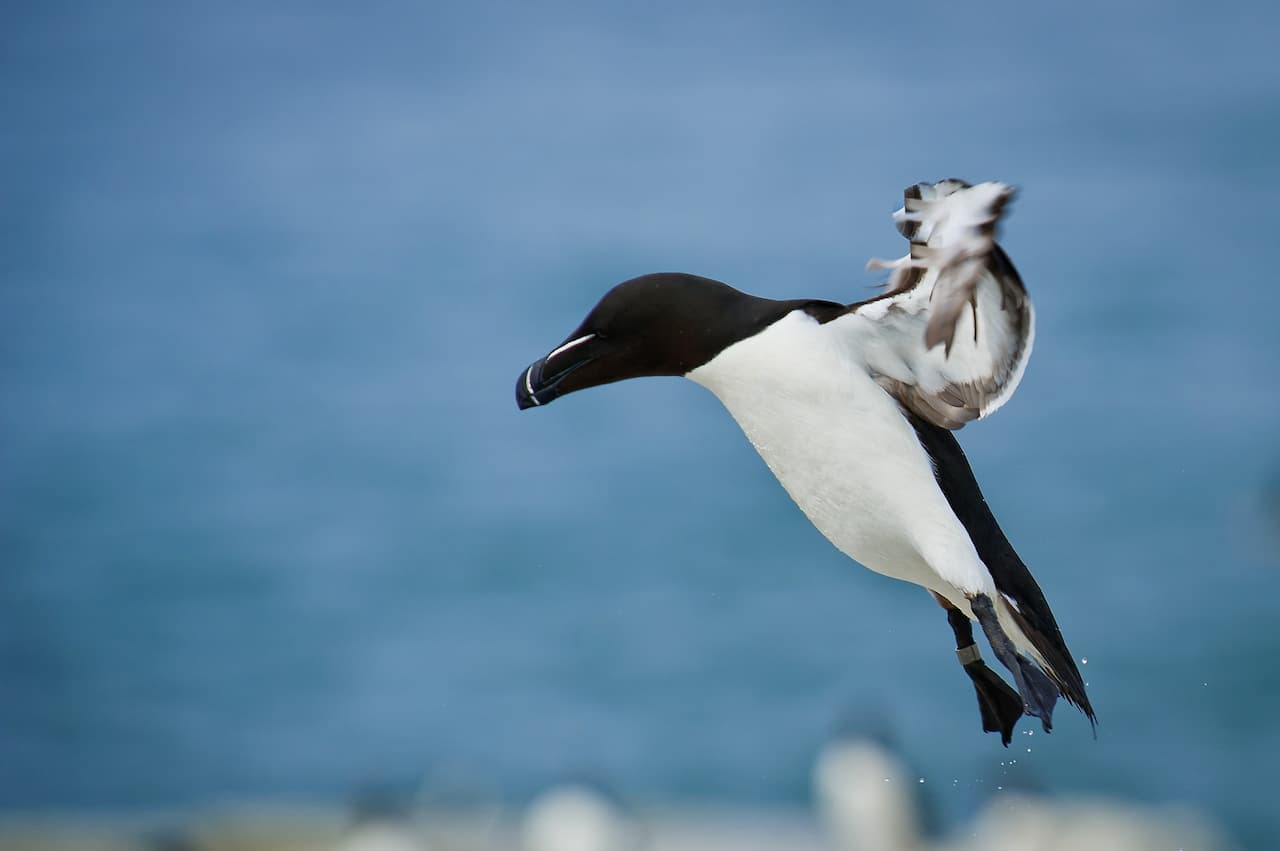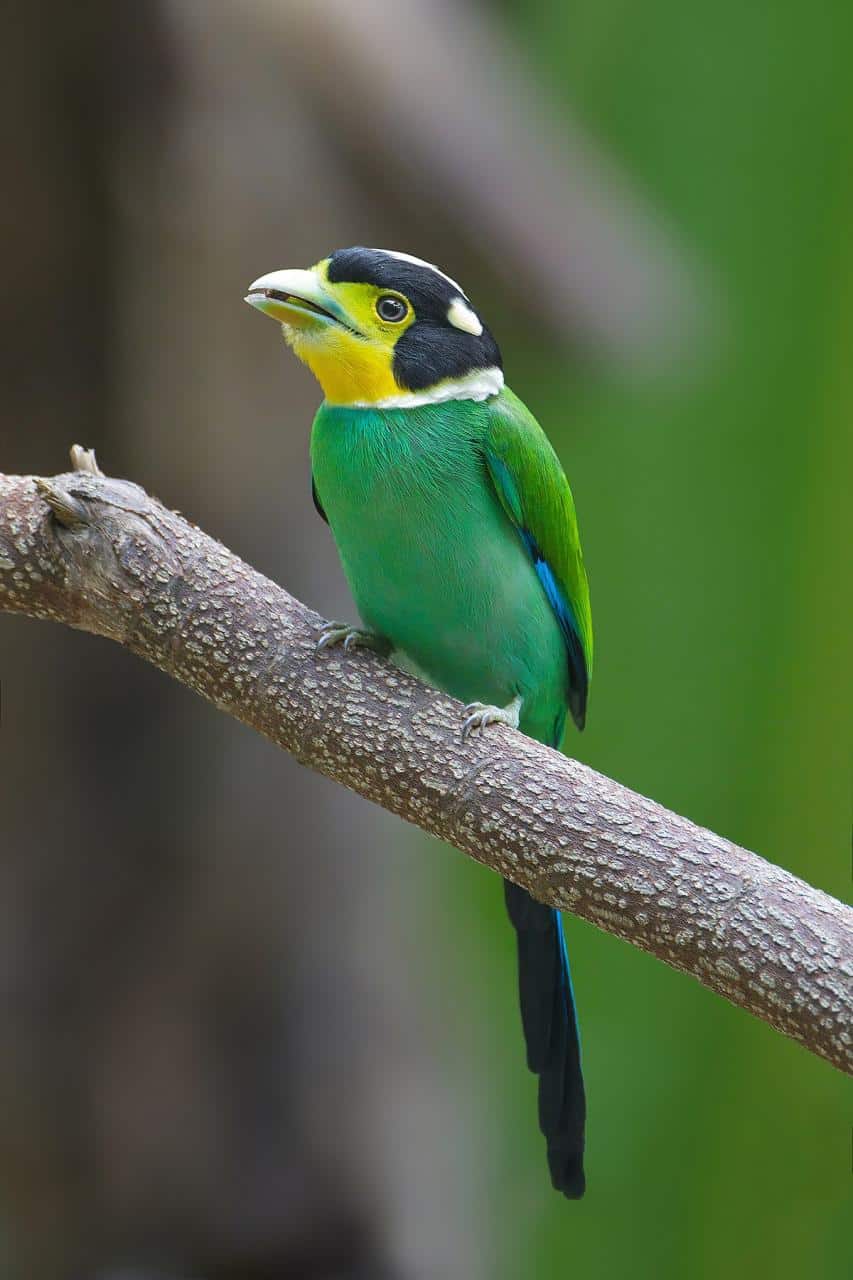Attwater’s Prairie Chicken
Grouse

Distribution / Habitat:
Over a century ago, one million Attwater’s Prairie Chickens graced the Texas and Louisiana gulf coastal prairie. Today, less than 1% of their native coastal prairie habitat remains and in 1998 it was estimated that only 260 remained, with less than 60 living in the wild.
Their sole refuges in the wild are the Attwater Prairie Chicken National Wildlife Refuge near Eagle Lake, Texas and another tiny parcel of land that was recently set aside near Texas City. There is also a small breeding colony residing on the grounds of the NASA Lyndon B. Johnson Space Center near Clear Lake, Texas. Captive breeding programs are underway at places such as Fossil Rim Wildlife Center [1], Texas Aand M University, Seaworld of Texas, and the Houston Zoo.
Their predators include Red-tailed Hawks, owls, coyotes, raccoons, skunks, opossum, and snakes. Many young birds also die from causes such as flooding.
Loss of habitat is believed to be the prime reason for their downfall. In addition to loss due to urbanization, the entire prairie ecosystem where they once thrived no longer exists in the same form. Where once grazing bison and periodic fires due to lightning reduced ground cover, the birds now have difficulty making their way through thick undergrowth. It is possible that other less-apparent changes in the ecosystem have had an effect as well.
Attwater’s Prairie Chicken has been on the endangered species list since March 1967.
Description:
The Attwater’s Prairie Chicken measures 17-18″ (43-45.5 cm) and weighs roughly 1.5 to 2 pounds (0.7-0.9 kg). It has a 28 inch (70 cm) wingspan.
These grouse-like ground birds have strong vertical bars of dark brown and buff-white in a zebralike pattern over the mantle (back), flanks, and underparts.
The species exhibits sexual dimorphism, with the males having elongated feathers, called pinnae, erected to form earlike structures. The male also has as a bright orange to reddish air sac on either side of his neck, which he inflates during mating displays.
Breeding / Mating:
The mating display can be seen in January or February when the birds gather in small groups on short grass, bare ground, rock outcroppings or hilly areas in order to choose a mate. This area is called a “booming ground” or a “lek”. In these areas, the females watch the males and choose their mate. The male emits a booming, “woo-woo” sound from his throat sac and struts around to attract a female.
Some of the traditional dances of the North American Plains Indians, notably those of the Lakota, are based on this booming display.
Later, the hens build grass nests on the ground, hidden in tall grass, where they lay their eggs.
Diet:
The bird has a diverse diet, eating leaves, seeds, and insects such as grasshoppers.
Copyright: Wikipedia. This article is licensed under the GNU Free Documentation License. It uses material from the Wikipedia.org … Additional information and photos added by Avianweb.
Please Note: The articles or images on this page are the sole property of the authors or photographers. Please contact them directly with respect to any copyright or licensing questions. Thank you.





